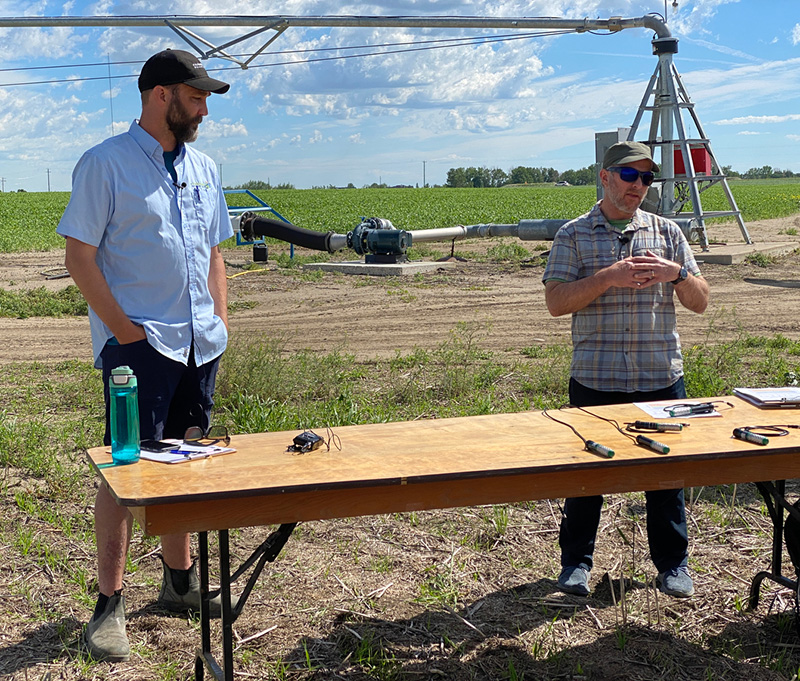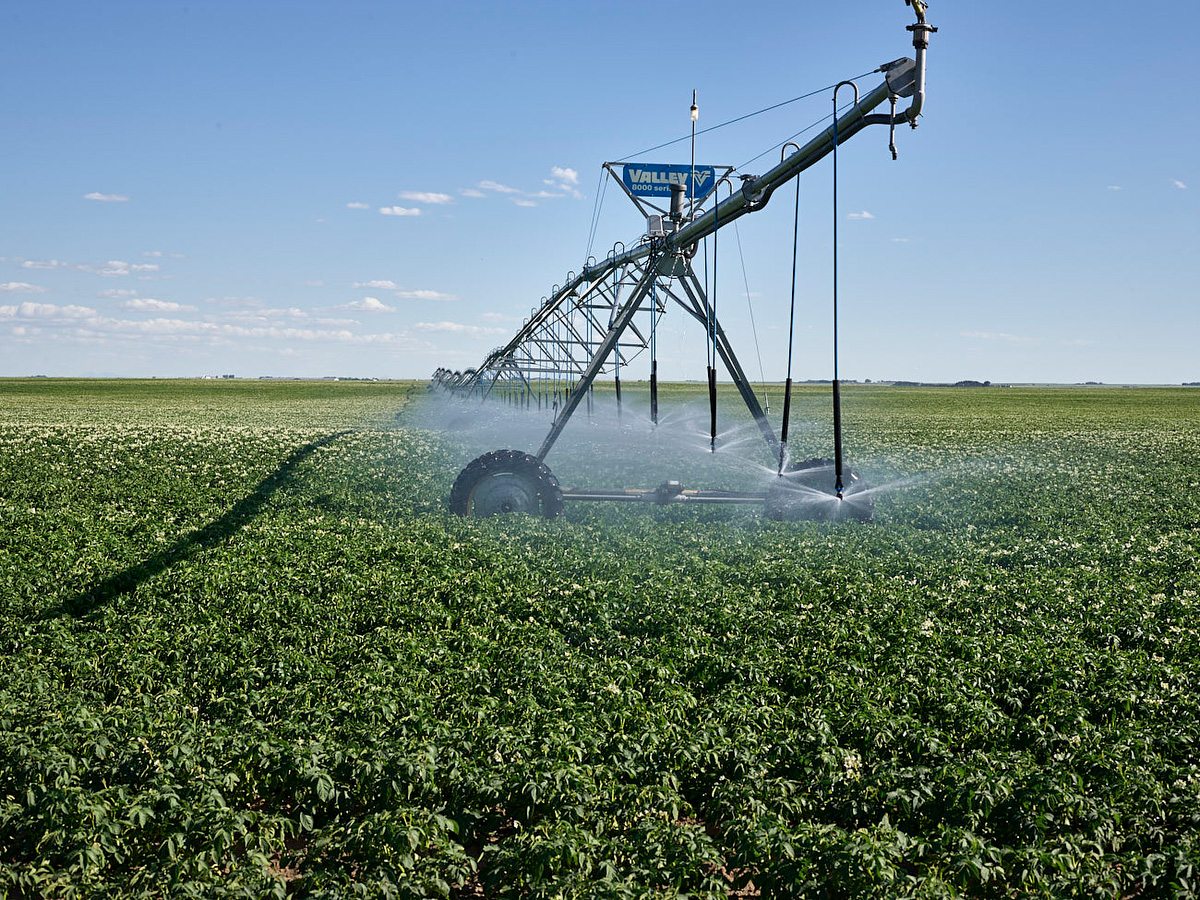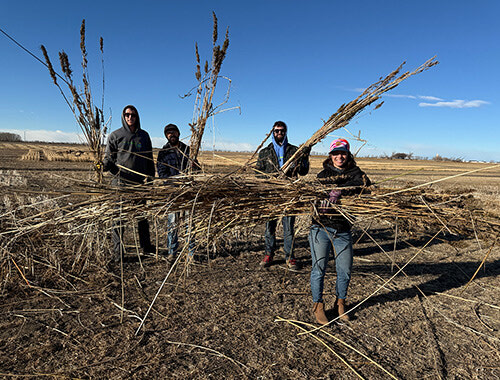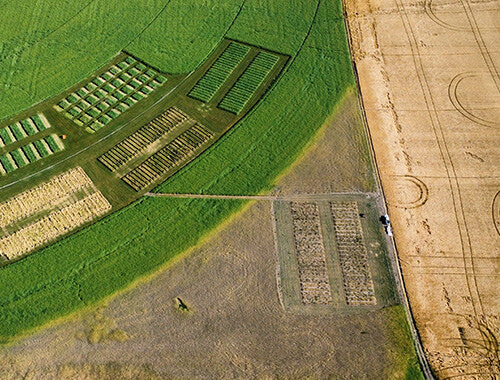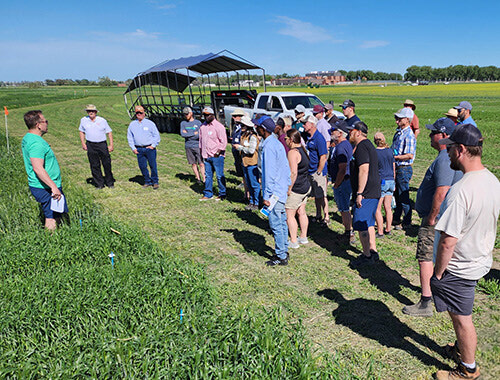On demand prescriptions for irrigated crops may soon be available to farmers across southern Alberta.
Farming Smarter, Ensemble Scientific, and LiteFarm continue their efforts to bring the irrigation capital of Canada one step closer to the future. The partnership has built off their previous variable rate irrigation project to start development on a Smart Irrigation support system over the next three years.
To collect as much data as possible, the smart irrigation system will be installed in four different fields each year.
Their goal is to deliver a tool that helps drive decision-making on the farm and keeps soil moisture in “the sweet spot.” Growers will receive a prescription containing soil moisture, a crop growth model, and local forecast through the app. They’ll know how much moisture their crops will need and how much is available in real-time.
Any irrigator with a pivot will have the ability to apply a variable amount of water throughout their field. This system won’t rely on variable rate technology, instead use sensor arrays to report moisture requirements for optimal crop growth.
|
|
|
Lewis Baarda and Mark Johnson deliver a presentation on the preliminary study that analyzed variable rate technology at the 2022 Farming Smarter Field School. The results of this project would be used to guide the direction of the Smart Irrigation support system currently being developed. |
“We want to relieve a bit of weight off the shoulders of irrigators and simplify the decisions behind irrigating,” states Lewis Baarda, project coordinator and Field Tested Team Lead at Farming Smarter.
The system uses three to five in-ground sensor arrays to cover soil variability in trial fields. These sensors record the level of available soil moisture while the growth model highlights the crop’s short-term water requirements. A five-day forecast of predicted soil moisture hyper-localized to the field will also be included in the report.
Pulling soil moisture directly from the field gives farmers and agronomists immediate, relevant information to make informed decisions.
“Our recommendations compile readings from across the field and couple it with a forecast. The report sent to the user will include this information, the prescription is tailored to each region in the field,” Baarda says.
Areas of your field prone to saturation will be prescribed less water than higher spots. If a lot of rain is expected in the area, your will accommodate for the free moisture.
The best part is the customization the system allows for, Baarda mentions. Farmers know their fields best and can tweak the system to account for personal preferences once installed.
Getting in the air despite the lack of runway
Funding for the project wasn’t accepted until April this year, giving the team a late start. The combination of eager readiness and fast action saw the system up and running in this year’s four commercial fields.
“We had our sensors working and we were sharing the information with the farmers shortly after we received the green light,” states Baarda.
This continuation of the variable rate irrigation project shifts the focus from the technology to the data. It requires a lot of pieces to ensure data is accurate to what’s happening in the field. Between projects the team built better sensors, enhanced the network connectivity, improved soil moisture models, and “beefed up” the physical .
Farmers were a major component of the offseason development. The team worked alongside this year’s participants to fine-tune the system’s layout to meet the needs of its users. A process that has Baarda excited for the future of the project.
"I’m confident that the same day we install the system, the farmers will be ready to go. We’ll walk them through the system, and when we’re on-farm we can tweak it further to the needs of our farmers,” Baarda eagerly comments.
However, the team still has work to do while they wait for spring to return. After they review the data collected, they must compare it with what the farmers saw in their fields. This will ensure accuracy and give them directions on how to improve for Year Two.
“We’re in a fun place, who knows where it will go – either it works great or we have to fix a thousand bugs,” Baarda jokes.
“Either way, we’re ready!”
Interested in learning more about this project? Bookmark the project page! Want to get involved and think your farm is a fit? Connect with Lewis today!
|
|
|
The partnership works to build a system to provide irrigators with tools to support decision-making and relieve stress throughout the growing season by connecting weather and crop information with available soil moisture at the touch of a button. Stay tuned with this project for its completion in 2026. |

